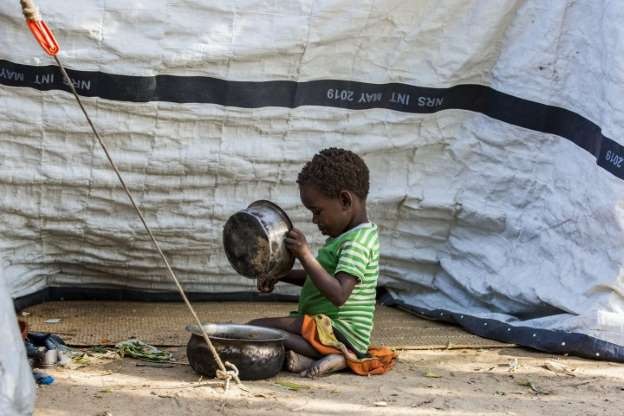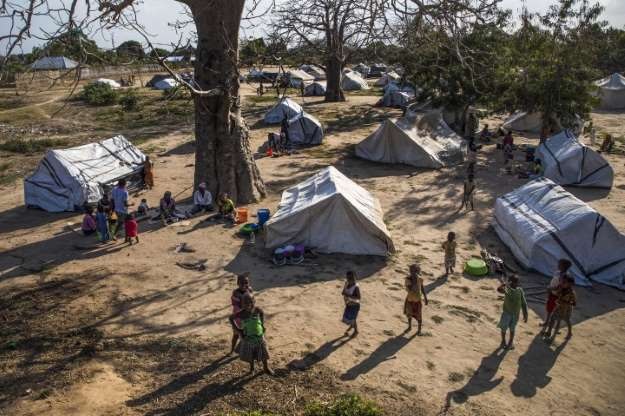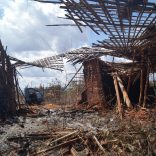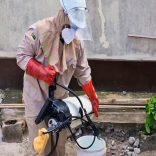Finland helps WPF provide hot meals to children in Nampula province, northern Mozambique
Mozambique: In Metuge camp, each family has to choose who sleeps outside the tent

Photo: Ricardo Franco/ Lusa
Anifa Saide, 37, complains of pain in her body, sore after another night when she slept outdoors on the floor under a mosquito net.
“We are suffering here,” she said, as she points to her back after three months of sleeping outside her family’s tent in Manono, Metuge, in the accommodation area for displaced persons from armed violence in Cabo Delgado, northern Mozambique.
The canvas tents distributed by humanitarian aid and other improvised traditional fabric are not enough for so many people.
Metuge has tents spread over five areas housing between 10,000 and 12,000 people, mostly from Quissanga district, 50 kilometres north.
Another 15,000 people were put up at the homes of family and friends.
Thousands are fleeing after the host village of Quissanga was attacked at the end of March by one of the groups who for two and a half years have been sowing terror in the province and whose incursions prevent a return.
There are at least two families per tent and in each one, you have to choose who sleeps inside and who stays out in the open – as a rule, children and older people stay inside, while younger men and women like Anifa stay outside.

The tide of displaced people has not stopped, Mustafá Ali Azito said, a member of Ayuda en Acción, a Spanish NGO that manages the day-to-day life of the reception areas in Metuge.
Initiatives are multiplying to try to minimise the problem of homelessness – one of the main shortages, alongside food shortages.
The International Organisation for Migration (IOM) and Ayuda en Acción have distributed hundreds of blankets and mats to displaced people.
But the best solution will be to create a new village where each family will receive a plot of land to build their houses with local materials, such as wood from the surrounding woodlands, as well as material kits offered by IOM.
The Mozambican government and humanitarian partners, which include NGOs and UN agencies, among others, have already found a plot of land and called in experts to check the minimum living conditions.

A final meeting is still needed to begin work on clearing the bush and preparing the plots in Ngalane, a community on the main road connecting Pemba, the provincial capital.
In Ngalane there will no longer be tents and each plot will have space for traditional dwellings two metres high and 18 square metres inside for two rooms, plus land for agricultural production for each household.
There will be water and energy supply, with public lighting to ensure more security, Mustafá Ali Azito said.
Whether the new village will be permanent depends on the evolution of security in the province.
“If people are in a fixed place,” with houses of local material but improved techniques, where they can sleep and produce subsistence agriculture, from May 2021 the situation will be different, thanks to the first harvests.
“If they are still here by then, they will have improved their houses on their own, thanks to the forest nearby, with sticks and bamboo, while the hunger situation will be minimised.
At the same time, the global restrictions imposed by Covid-19 could disappear and there will be improvements in the arrival of humanitarian aid to Cabo Delgado, at least Mustafá hopes so.













Leave a Reply
Be the First to Comment!
You must be logged in to post a comment.
You must be logged in to post a comment.